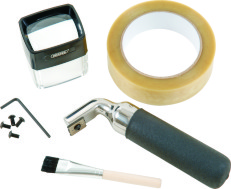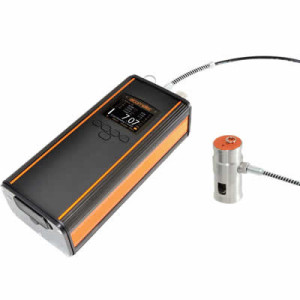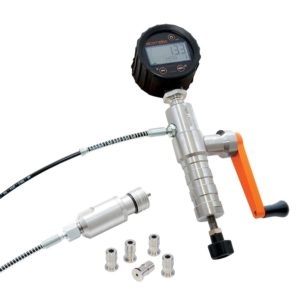Home » Products » Coating Inspection » Adhesion Testers
Adhesion Testers
Adhesion testers verify that both surface preparation and coating application are within specification.
From the largest man-made structures to the smallest household appliances, most manufactured products have a protective or cosmetic coating. Premature failure of this coating can, at the very least, result in additional costs of rework.
Adhesion testing after the coating process will quantify the strength of the bond between substrate and coating, or between different coating layers or the cohesive strength of some substrates. Routine adhesion testing is used as part of inspection and maintenance procedures to help detect potential coating failures.
Elcometer offer a highly comprehensive range of Adhesion Gauges designed specifically to meet your requirements.
The gauges can be split into three categories:
- Cross Hatch / Cross Cut Method
The coating is cut into small squares, thereby reducing lateral bonding, and the adhesion assessed against ISO, ASTM, DIN or other International Standards.
- Pull Off Adhesion Method
Tensile Dollies (or stubs) are glued to the coating and, when the adhesive has cured, the force required to pull the dolly off the surface is measured.
- Push Off Adhesion Method
Similar to the Pull Off Adhesion Test, a dolly is glued to the coating. When the adhesive has cured the dolly is pushed off the surface by the adhesion gauge. Ideal for adhesion tests on curved surfaces.
How to Select the Correct Adhesion Gauge
Cross Hatch Cutters

Using this Cross Hatch adhesion tester is a fast, low cost, visual comparison method for paint and powder coatings up to a thickness of 250µm in order to evaluate the coating adhesion. The coating is cut into small squares, thereby reducing lateral bonding, and the coating adhesion assessed against ISO, ASTM or Corporate Standards.
| Advantages: | A fast, low cost, comparison method – see table below under “Description” |
| Possible Limitations: | A subjective test for flat surfaces for a limited thickness range (250 mic) |
| Applications: | For paint and powder coatings up to a thickness of 125 mic. |
Pull Off Adhesion Testers

Simple to use, quantitative range giving a definitive adhesion value, ideal for the laboratory or field on flat or curved substrate applications. Tensile Dollies (or stubs) are glued to the coating and, when the adhesive has cured, the force required to pull the coating off the surface is measured.
Elcometer pull off gauges are very accurate and reliable to measure the coating adhesion.
| Advantages: | Simple to use, quantitative range – giving you a definitive adhesion value |
| Possible Limitations: | Time required for some adhesives to cure |
| Applications: | Ideal gauge for the laboratory or field – flat or some curved substrate applications |
Push Off Adhesion Testers

Push Off Adhesion Method Similar to the Pull Off Adhesion Test, a dolly is glued to the coating. When the adhesive has cured the dolly is pushed off the surface by the adhesion gauge. Ideal for adhesion tests on curved surfaces.
| Advantages: | Fast cure time adhesives can be used, ideal for curved surfaces |
| Possible Limitations: | High forces exerted by gauge may cause thin substrates to deform |
| Applications: | Pipelines and metal spray coatings |
| Description | IS0/BS/DIN | ASTM |
| The edges of the cuts are completely smooth, none of the squares of the lattice are detached | 0.5 | B |
| Detachment of small flakes of the coating at the intersections of the cuts, A cross cut area not significantly greater than 5%, is affected | 1 | 4B |
| The coating has flaked along the edges and/or at the intersections of the cuts. A cross cut area significantly greater than 5%, but not significantly greater than 15%, is affected | 2 | 3B |
| The coating has flaked along the edges of the cuts partly or wholly in large ribbons, and / or it has flaked partly or wholly on different parts of the squares. A cross cut area significantly greater than 15%, but not significantly greater than 35%, is affected | 3 | 2B |
| The coating has flaked along the edges of the cuts in large ribbons and/or some squares have detached partly or wholly. Across cut area significantly greater than 35% but not significantly greater than 35% is affected | 4 | 1B |
| Any degree of flaking that cannot even be classified by classification 4/1B | 5 | 0B |

